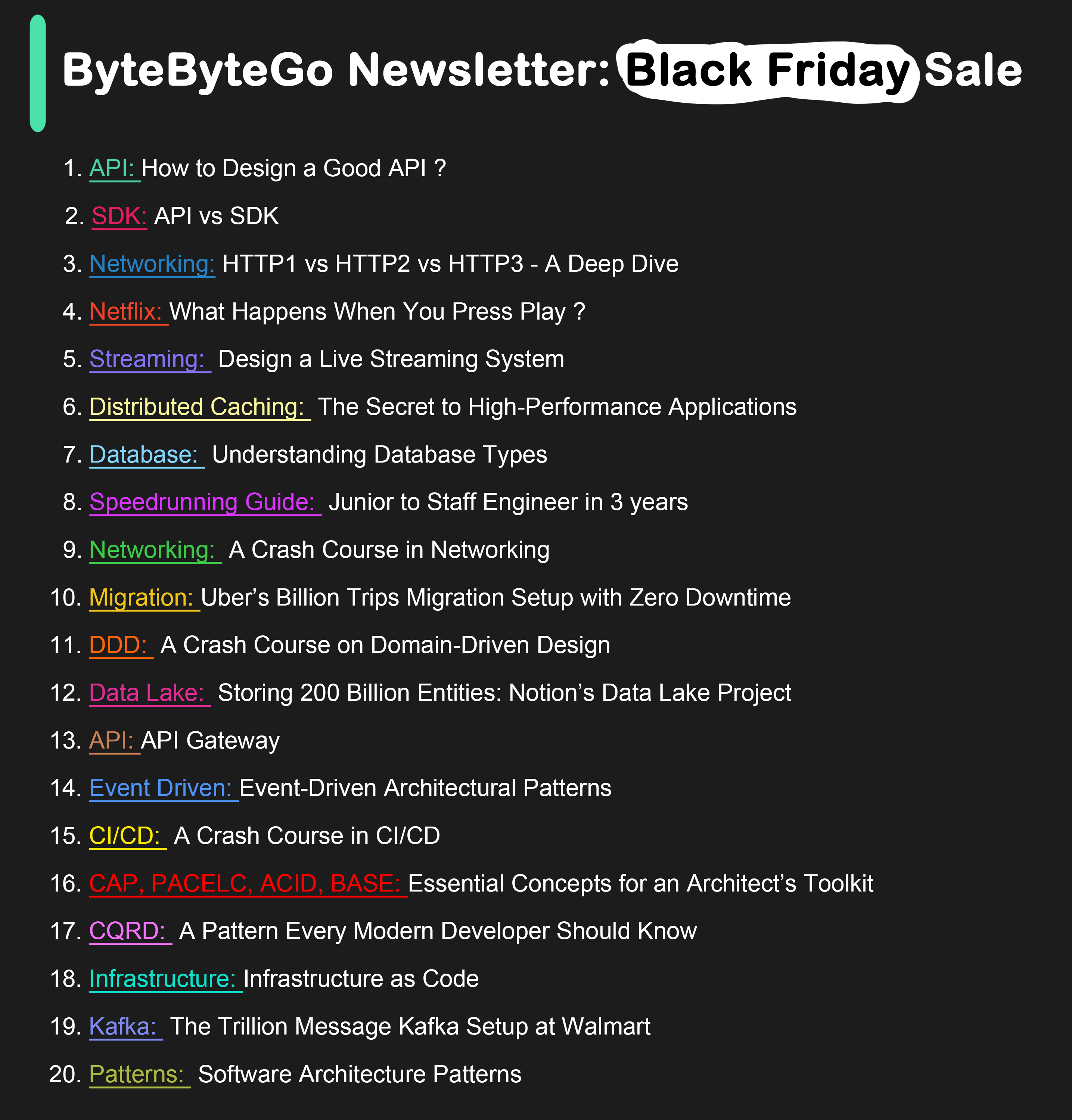Archives
- By thread 5362
-
By date
- June 2021 10
- July 2021 6
- August 2021 20
- September 2021 21
- October 2021 48
- November 2021 40
- December 2021 23
- January 2022 46
- February 2022 80
- March 2022 109
- April 2022 100
- May 2022 97
- June 2022 105
- July 2022 82
- August 2022 95
- September 2022 103
- October 2022 117
- November 2022 115
- December 2022 102
- January 2023 88
- February 2023 90
- March 2023 116
- April 2023 97
- May 2023 159
- June 2023 145
- July 2023 120
- August 2023 90
- September 2023 102
- October 2023 106
- November 2023 100
- December 2023 74
- January 2024 75
- February 2024 75
- March 2024 78
- April 2024 74
- May 2024 108
- June 2024 98
- July 2024 116
- August 2024 134
- September 2024 130
- October 2024 141
- November 2024 171
- December 2024 115
- January 2025 216
- February 2025 140
- March 2025 220
- April 2025 233
- May 2025 239
- June 2025 303
- July 2025 175
-
Cosmetics Industry Contacts List
Hi, Good day to you!
We have successfully built a verified file of Cosmetics Industry contacts with accurate emails. Would you be interested in acquiring Cosmetics Industry Professionals List across North America, UK, Europe and Global?
Few Lists:
ü Cosmetics and personal care product manufacturers
ü Fragrance Manufacturers, Home Care Manufacturers
ü Cosmetics and Personal Care Brand Owners
ü Perfume & Toiletries Manufacturers
ü Private label and Contract manufacturers
ü Salon and hotel chains
ü Consultants, Packaging Professionals, etc
Our list comes with: Company/Organization, Website, Contacts, Title, Address, Direct Number and Email Address, Revenue Size, Employee Size, Industry segment.
Please send me your target audience and geographical area, so that I can give you more information, Counts and Pricing just for your review.
Thank you for your time and consideration. I eagerly await your response.
Regards,
Luna Keller | Customer Success Manager
B2B Marketing & Tradeshow Specialist
PWe have a responsibility to the environment
Before printing this e-mail or any other document, let's ask ourselves whether we need a hard copy
by "Luna Keller" <luna@b2bleadsonline.us> - 10:36 - 29 Nov 2024 -
How to surf the geopolitical waves
The Shortlist
Emerging ideas for leaders Curated by Alex Panas, global leader of industries, & Axel Karlsson, global leader of functional practices and growth platforms
Welcome to the latest edition of the CEO Shortlist, a biweekly newsletter of our best ideas for the C-suite. This week, we feature our latest thinking on how to successfully navigate geopolitical instability. We appreciate the opportunity to connect and hope you find our perspectives novel and insightful. Please let us know what you think! You can reach us at Alex_Panas@mckinsey.com and Axel_Karlsson@mckinsey.com. Thank you.
—Alex and Axel
You may not care about geopolitics—but geopolitics cares about you. So said Western intelligence agencies in a recent briefing to CEOs. Generational shifts in the global order are well under way. And, according to the latest McKinsey Global Survey on economic conditions, business leaders today view geopolitical tensions as the biggest risk to growth. Political differences have already complicated economic relationships: trade interventions worldwide have surged 12-fold since 2010.
The savviest business leaders approach uncertainty with caution—and a healthy dash of curiosity. Today’s geopolitical shifts present not only risks to mitigate but opportunities to seize, argue Cindy Levy, Shubham Singhal, and Matt Watters in a new article. They highlight ten value drivers leaders can explore amid geopolitical shifts and explain how a proactive approach to geopolitics can help organizations safeguard operations and capture emerging opportunities.
We hope you find these ideas inspiring and helpful. See you next time with more McKinsey ideas for the CEO and others in the C-suite.Share these insights
This email contains information about McKinsey’s research, insights, services, or events. By opening our emails or clicking on links, you agree to our use of cookies and web tracking technology. For more information on how we use and protect your information, please review our privacy policy.
You received this email because you subscribed to The CEO Shortlist newsletter.
Copyright © 2024 | McKinsey & Company, 3 World Trade Center, 175 Greenwich Street, New York, NY 10007
by "McKinsey CEO Shortlist" <publishing@email.mckinsey.com> - 05:01 - 29 Nov 2024 -
Stateless Architecture: The Key to Building Scalable and Resilient Systems
Stateless Architecture: The Key to Building Scalable and Resilient Systems
In today's rapidly evolving digital landscape, developers face the constant challenge of building applications that are not only robust and secure but also infinitely scalable.͏ ͏ ͏ ͏ ͏ ͏ ͏ ͏ ͏ ͏ ͏ ͏ ͏ ͏ ͏ ͏ ͏ ͏ ͏ ͏ ͏ ͏ ͏ ͏ ͏ ͏ ͏ ͏ ͏ ͏ ͏ ͏ ͏ ͏ ͏ ͏ ͏ ͏ ͏ ͏ ͏ ͏ ͏ ͏ ͏ ͏ ͏ ͏ ͏ ͏ ͏ ͏ ͏ ͏ ͏ ͏ ͏ ͏ ͏ ͏ ͏ ͏ ͏ ͏ ͏ ͏ ͏ ͏ ͏ ͏ ͏ ͏ ͏ ͏ ͏ ͏ ͏ ͏ ͏ ͏ ͏ ͏ ͏ ͏ ͏ ͏ ͏ ͏ ͏ ͏ ͏ ͏ ͏ ͏ ͏ ͏ ͏ ͏ ͏ ͏ ͏ ͏ ͏ ͏ ͏ ͏ ͏ ͏ ͏ ͏ ͏ ͏ ͏ ͏ ͏ ͏ ͏ ͏ ͏ ͏ ͏ ͏ ͏ ͏ ͏ ͏ ͏ ͏ ͏ ͏ ͏ ͏ ͏ ͏ ͏ ͏ ͏ ͏ ͏ ͏ ͏ ͏ ͏ ͏ ͏ ͏ ͏ ͏ ͏ ͏ ͏ ͏ ͏ ͏ ͏ ͏ ͏ ͏ ͏ ͏ ͏ ͏ ͏ ͏ ͏ ͏ ͏ ͏ ͏ ͏ ͏ ͏ ͏ ͏ ͏ ͏ ͏ ͏ ͏ ͏ ͏ ͏ ͏ ͏ ͏ ͏ ͏ ͏ ͏ ͏ ͏ ͏ ͏ ͏ ͏ ͏ ͏ ͏ ͏ ͏ Forwarded this email? Subscribe here for moreLatest articles
If you’re not a subscriber, here’s what you missed this month.
To receive all the full articles and support ByteByteGo, consider subscribing:
In today's rapidly evolving digital landscape, developers face the constant challenge of building applications that are not only robust and secure but also infinitely scalable.
At the heart of this challenge lies a fundamental architectural decision: how to handle the application state. The state is your application's memory—every user session, shopping cart, and authentication token that makes personalized digital experiences possible.
The journey from stateful to stateless architectures represents one of the most important shifts in modern system design.
Traditional stateful applications dominated the early 2000s and directly maintained user sessions and data on application servers. While this approach of keeping everything in one place seemed logical initially, it created significant challenges as applications scaled to serve millions of users worldwide.
Consider an e-commerce platform handling Black Friday sales. In a stateful architecture, each server will need to maintain session information for thousands of users, leading to complex load-balancing requirements and potential session loss if a server fails. Modern stateless architectures, however, externalize this state, allowing any server to handle any request, dramatically simplifying scaling and improving reliability.
Several converging factors have led to the industry’s embrace of stateless architecture:
The rise of cloud computing has made horizontal scaling not just possible but economically advantageous.
The shift from SOAP-based services to REST and GraphQL APIs, which are inherently stateless.
Microservices architectures, which break down monolithic applications into smaller, independent services, have become the norm rather than the exception. These services must be stateless to maintain independence and scalability.
In this article, we’ll explore the principles, implementation strategies, and best practices of stateless architecture.
What is Stateless Architecture...

Continue reading this post for free in the Substack app
Like
Comment
Restack
© 2024 ByteByteGo
548 Market Street PMB 72296, San Francisco, CA 94104
Unsubscribe
by "ByteByteGo" <bytebytego@substack.com> - 11:37 - 28 Nov 2024 -
Don’t miss our webinar on building a composable API platform!
Don’t miss our webinar on building a composable API platform!
Just one week to go! Learn how to build a composable API platform that harnesses OAS, OAuth and OTel.Hi Md Abul,
Would you like to know how to build a composable API platform that harnesses the power of OAS, OAuth and OTel? Then join our webinar on December 5th!
Tyk’s Developer Advocate, Buddha Bhattacharya, and Sedky Haider, our Director, Solution Architecture, will be providing a live demo of how you can build an API platform using Tyk, Grafana and Keycloak.Join us to learn about:
- Building a composable API platform using open standards and open source tools
- Key components and KPIs
- Design challenges and pitfalls
- The value of OAuth, OTel and OpenAPIs
No matter which sector you operate in, you can take this knowledge back to your business and get ready to design an API platform that helps fuel your success.
Speakers

Budha Bhattacharya
Developer Advocate
Sedky Haider
Director, Solution ArchitectureOur webinar will take place via Zoom at 10 am EDT/3 pm GMT on December 5th, so make sure you register to join us. Click here for full details.
See you in a week,
Budha and teamTyk, Huckletree 199 Bishopsgate, Broadgate, London, City of London EC2M 3TY, United Kingdom, +44 (0)20 3409 1911
by "Budhaditya Bhattacharya" <budha@tyk.io> - 06:00 - 28 Nov 2024 -
Say goodbye to Global Benefits hassles: join our webinar
Say goodbye to Global Benefits hassles: join our webinar
Discover how Remote simplifies global benefits management, ensuring compliance, efficiency, and a seamless experience for your team worldwideHi MD,
Managing benefits across multiple countries can be complex. Join our webinar to learn how Remote, in partnership with Kota, makes global benefits easier to manage while ensuring compliance and efficiency.
Streamline global benefits management with Remote
🗓 Date: Wednesday, December 11, 2024
⏰ Time: 4pm UTC
What you’ll gain from this webinar:
Insights into common challenges of managing global benefits
- Practical ways to streamline compliance and administration
- How Remote’s platform and Kota’s infrastructure provide a seamless, integrated solution
Speakers:
- Jonathan Goldsmith, GM Global Payroll at Remote
- Luke Mackey, CEO at Kota
What are you waiting for?
This session is designed to give you actionable takeaways for managing benefits efficiently across borders.







You received this email because you are subscribed to News & Offers from Remote Europe Holding B.V
Update your email preferences to choose the types of emails you receive.
Unsubscribe from all future emailsRemote Europe Holding B.V
Copyright © 2024 All rights reserved.
Kraijenhoffstraat 137A 1018RG Amsterdam The Netherlands
by "Remote" <hello@remote-comms.com> - 04:00 - 28 Nov 2024 -
Enhance your website's search engine rankings
Enhance your website's search engine rankings
Hi there,
For 25 years Infoserve has been helping local companies like Your Telecoms Consultant to enhance their search engine rankings and attract more visitors to their websites.
Unlock Visibility
Search engines like Google process billions of daily searches.
If you want to ensure your website stands out and is easily found amongst them, we can help you.
As one of the first UK digital agencies to pioneer SEO, Infoserve has plenty of data and insights to ensure you’re easily found online.
Stay Ahead with Monthly Content Reviews
As search queries change frequently, we offer monthly content reviews to ensure you remain up to date with the latest trends and keep your online presence relevant and effective.
Don’t just take it from us, here is what our customers say:
“We have used Infoserve for the past 12 months and they have improved our online presence massively using pay-per-click, SEO and blogging. The monthly performance reports are excellent coupled with online meetings which make the relationship more personable and engaging. I would not hesitate in recommending this company and we will continue to utilise their services.”
Why not give us a try?
To get your free, comprehensive SEO audit and no-obligation personalised quote, email me back or give me a call on 0800 089 0879.
Thank you,
Matt Budd
Digital Marketing Consultant
0800 089 0879
infoserve.com
Infoserve Ltd, Southside Aviation, Leeds Airport, LS19 7UG. Registered in England No. 04209122
We have sent this email to info@learn.odoo.com, having found your company details online, as we believe our digital marketing services may be of legitimate interest to your business. If you would no longer like to get emails from us you can stop them here.
by "Matt Budd" <matt@infoserve.uk> - 03:07 - 28 Nov 2024 -
✨ Discover New Tools: Remote Equity, Global Benefits and more!
✨ Discover New Tools: Remote Equity, Global Benefits and more!
Your monthly global update from Remote has landed, check it out!.png?width=204&upscale=true&name=Logo%20Horizontal%20(3).png)

Featured news
Introducing Headache-Free Global Stock Options
Just a few weeks ago, we launched Remote Equity - a solution for you to easily grant and manage equity for your global team without the need to find, hire, and manage lawyers. Simply sync your cap table management tool (Carta, Pulley, etc) with Remote, and we’ll help you execute grants in seconds, all while keeping your cap table up to date.

Product updates
Introducing Remote Global Benefits
Leverage Remote’s platform to manage employee benefits with ease and compliance.
Quickly quote and enroll your team—including dependents—in minutes, all in one place. Simplify administration, ensure compliance, control costs, and integrate seamlessly with payroll for accurate results while saving significant time on managing policies, tax reconciliation, and billing
Introducing your new Offboarding Assistant
Remote’s AI-powered Offboarding Assistant is your essential tool for streamlining global offboarding. With country-specific insights, it helps your team confidently navigate local labor laws, reducing compliance risks for efficient offboarding across borders.
Access the Offboarding Assistant directly from a talent’s profile or the termination form. Currently available in top countries, with more locations coming soon!
Remote Benefits: Global Business Travel Insurance
Global travel requires a specialized level of protection, and Remote delivers just that.
In partnership with Expatriate Group, we’ve designed a solution to meet the unique challenges faced by employees traveling across borders.
Operating across more than 90 countries, we offer coverage that takes care of every detail—from navigating foreign healthcare systems to recovering lost business equipment.
To learn more about Remote Global Business Travel Insurance, and to see a full list of terms, prices, and coverage types, check out our detailed breakdown.
Introducing Crypto Payouts for Contractors
Contractors on Remote can now choose to have their invoices paid out in cryptocurrency, offering a fast, secure, and hassle free payment option. This new capability empowers contractors with greater flexibility and control over how they receive payments, supporting global transactions without the hassle of traditional banking delays or high currency conversion fees.

New webinars
💰 Do you want to build a fair, yet engaging pay framework for your global team?
Date: December 4 at 4 PM UTC / 11 AM EST
With speakers from Remote and Taylor Wessing.
Topics covered: enhancing transparency, innovative benefits, equity's role in diverse pay structures, and the EOR model for global compliance.🇧🇪 How can companies in Belgium scale and hire globally?
Date: December 5 at 10 AM UTC / 11 AM CET
With speakers from Bizzy and Remote, moderated by author Isabel De Clercq
Topics covered: Strategies to recruit key talent both in Belgium and internationally, leveraging HR technology to remain compliant worldwide.🇺🇸 Is expanding into the US part of your 2025 hiring strategy?
Date: December 5 at 4 PM UTC / 11 AM EST
With speakers from Remote, Wilson Sonsini, and JP Morgan.
Topics covered: raising capital, payroll, compliance, and banking strategies for US expansion.
🇫🇷 How companies can speed up onboarding of new talent
Date: December 10 at 10 AM UTC / 11 AM CET
With speakers from myRHLine and Remote.
Topics covered: Onboarding technology and best practices for optimizing talent acquisition and retention.
Note: This webinar will be run in French🙋♀️ Looking to simplify global payroll & benefits management?
Date: December 11 at 4PM UTC
With speakers from Remote and Kota
Topics covered: Insights into the complexities of global payroll and benefits, strategies to streamline operations and practical tips to support distributed teams effectively🥳 Need tips on how to improve your remote company culture?
Date: December 12 at 11 AM EST / 4 PM UTC
With speakers from ThinkHuman, Talaera, Remote, and Leapsome.
Topics covered: building alignment, collaboration, and success with dispersed and culturally diverse teams.
Upcoming events
🎄🇩🇪 Join our HR Holiday Party in Hamburg, Germany
Celebrate the season with us! On December 5th, HR Collective, rhome and Remote are hosting a special holiday event in Hamburg with insights on remote work, networking opportunities and festive vibes.
Secure your spot now – seats are limited.

Partners offers spotlight
Fleet
Our partner Fleet simplifies IT equipment procurement, leasing, and management for global teams, helping companies save time, optimise costs, and ensure device security. Ship equipment securely to 120+ countries. As a Remote customer, you receive 2 months free on your nexts orders.
Trainual
Now that you’ve seamlessly hired an elite team using Remote, it’s time to get them trained up. Enter… Trainual. They make it easy to document your business processes, so every team member knows what to do and how to do it, from onboarding to training.







You received this email because you are subscribed to
News & Offers from Remote Europe Holding B.V
Update your email preferences to choose the types of emails you receive.
Unsubscribe from all future emailsRemote Europe Holding B.V
Copyright © 2024 Remote Europe Holding B.V All rights reserved.
Kraijenhoffstraat 137A 1018RG Amsterdam The Netherlands
by "Remote" <hello@remote-comms.com> - 08:29 - 27 Nov 2024 -
A new operations strategy for a world with fewer workers
Re:think
A new vision for frontline work and workers
by "McKinsey Quarterly" <publishing@email.mckinsey.com> - 02:32 - 27 Nov 2024 -
What do many executives overlook about challenging geopolitical conditions?
Only McKinsey Perspectives
3 areas of focus Brought to you by Alex Panas, global leader of industries, & Axel Karlsson, global leader of functional practices and growth platforms
Welcome to the latest edition of Only McKinsey Perspectives. We hope you find our insights useful. Let us know what you think at Alex_Panas@McKinsey.com and Axel_Karlsson@McKinsey.com.
—Alex and Axel
•
Risks and opportunities. No company has been immune to the effects of geopolitics, but for decades, these concerns have tended to take a back seat to others. Today, however, CEOs and boards understand that the global order is shifting and will be for the foreseeable future. According to McKinsey’s Cindy Levy, Shubham Singhal, and Matt Watters, what many leaders have not yet contended with are the business opportunities that geopolitical shifts present, concentrating instead only on the risks these issues pose.
—Edited by Belinda Yu, editor, Atlanta
This email contains information about McKinsey's research, insights, services, or events. By opening our emails or clicking on links, you agree to our use of cookies and web tracking technology. For more information on how we use and protect your information, please review our privacy policy.
You received this email because you subscribed to the Only McKinsey Perspectives newsletter, formerly known as Only McKinsey.
Copyright © 2024 | McKinsey & Company, 3 World Trade Center, 175 Greenwich Street, New York, NY 10007
by "Only McKinsey Perspectives" <publishing@email.mckinsey.com> - 01:23 - 27 Nov 2024 -
A Crash Course on Using AI to Save Time and Focus on What Matters
A Crash Course on Using AI to Save Time and Focus on What Matters
7 steps to level up your AI prompts and 8 of my favorite AI use cases for work.͏ ͏ ͏ ͏ ͏ ͏ ͏ ͏ ͏ ͏ ͏ ͏ ͏ ͏ ͏ ͏ ͏ ͏ ͏ ͏ ͏ ͏ ͏ ͏ ͏ ͏ ͏ ͏ ͏ ͏ ͏ ͏ ͏ ͏ ͏ ͏ ͏ ͏ ͏ ͏ ͏ ͏ ͏ ͏ ͏ ͏ ͏ ͏ ͏ ͏ ͏ ͏ ͏ ͏ ͏ ͏ ͏ ͏ ͏ ͏ ͏ ͏ ͏ ͏ ͏ ͏ ͏ ͏ ͏ ͏ ͏ ͏ ͏ ͏ ͏ ͏ ͏ ͏ ͏ ͏ ͏ ͏ ͏ ͏ ͏ ͏ ͏ ͏ ͏ ͏ ͏ ͏ ͏ ͏ ͏ ͏ ͏ ͏ ͏ ͏ ͏ ͏ ͏ ͏ ͏ ͏ ͏ ͏ ͏ ͏ ͏ ͏ ͏ ͏ ͏ ͏ ͏ ͏ ͏ ͏ ͏ ͏ ͏ ͏ ͏ ͏ ͏ ͏ ͏ ͏ ͏ ͏ ͏ ͏ ͏ ͏ ͏ ͏ ͏ ͏ ͏ ͏ ͏ ͏ ͏ ͏ ͏ ͏ ͏ ͏ ͏ ͏ ͏ ͏ ͏ ͏ ͏ ͏ ͏ ͏ ͏ ͏ ͏ ͏ ͏ ͏ ͏ ͏ ͏ ͏ ͏ ͏ ͏ ͏ ͏ ͏ ͏ ͏ ͏ ͏ ͏ ͏ ͏ ͏ ͏ ͏ ͏ ͏ ͏ ͏ ͏ ͏ ͏ ͏ ͏ ͏ ͏ ͏ ͏ ͏ Forwarded this email? Subscribe here for moreA Crash Course on Using AI to Save Time and Focus on What Matters
7 steps to level up your AI prompts and 8 of my favorite AI use cases for work
∙Guest post
READ IN APP ✂️Cut your QA cycles down from hours to minutes with automated testing (Sponsored)
If slow QA processes bottleneck you or your software engineering team and you’re releasing slower because of it — you need to check out QA Wolf.
They get engineering teams to 80% automated end-to-end test coverage and helps them ship 5x faster by reducing QA cycles from hours to minutes.
QA Wolf takes testing off your plate. They can get you:
Unlimited parallel test runs
24-hour maintenance and on-demand test creation
Human-verified bug reports sent directly to your team
Zero flakes, guaranteed
The result? Drata’s team of 80+ engineers achieved 4x more test cases and 86% faster QA cycles.
This is a guest post from my friend Peter Yang. Peter uses AI extensively to balance his full-time job, newsletter, and two kids, so I think you’ll love his practical tips:
Hey there! Peter here.
I've spent hundreds of hours experimenting with AI to save time at work. So today, I want to share an extremely practical guide with:
7 steps to craft a great AI prompt
8 of my favorite AI use cases at work
If you find this valuable, get my personal AI prompt library to help you save hours every week by copying what’s already working for me. Get 20% off the annual plan of my newsletter (until Black Friday) to unlock it and all my other AI guides.
Ok, enough Black Friday talk. Let’s dive in 👇
7 steps to craft a great AI prompt
Here’s how I usually adopt AI at work:
I start working on a super annoying and repetitive task.
I try to use 1-line prompts to get AI to do the work for me.
After struggling with lazy prompting, I finally decide to write a great prompt.
So, what makes a great AI prompt? Well, it usually includes these 7 steps:
Give AI a specific role and task: e.g., “You’re an expert editor…your task is to…”
Give specific instructions: e.g., “Follow these steps carefully…”
Include examples: e.g., “Analyze the <examples> to understand my style…”
Use XML tags for structure: e.g., “<data></data> and <prompt></prompt>.” Putting data before the instructions can improve AI’s response quality by 30%.
Give AI space to think (chain of thought): e.g., “In <thinking> tags, describe the key aspects of the edits you will make.”
Ask for variations: e.g., “Give me three variations.”
Add constraints: e.g., “Limit to 500 words.”
For example, here’s a prompt that I use to create PRDs from notes and discussions:
<reference> Paste in my PRD template here </reference> <instructions> You are a senior product leader and a clear written communicator. Your task is to help transform my rough notes into a great PRD. Please follow these steps carefully: 1. Analyze the <reference> to understand my desired style and format. In <thinking> tags, summarize the key characteristics of my PRD template. 2. Ask me to share my notes next. 3. Structure the PRD as follows: a) Problem: Clearly describe: Who is the customer? What is the customer's problem? How do we know that this is a problem? b) Goals: Include 1 goal metric and 2-3 input metrics. c) Solution: Clearly describe the solution and milestones. For each milestone, write concise user stories in first person view ("I see...", "I can...") with nested bullet points describing how the feature works. 4. Limit the PRD to 2-3 pages max 5. Present your response using: <draft_prd> tags for the structured document <follow_up> tags for follow-up items Ask me for more information if you need it. Be as clear, concise, and specific as possible. </instructions>If you only remember one thing from this section, make it this:
The most important step in writing a great AI prompt is to include examples.
Anyone can write a prompt to “make a viral social post” or “edit a newsletter.” But the magic happens when you show AI exactly what “viral” and “good” means.
That’s why I included my best examples in my personal AI prompt library:
Whenever I write a new AI prompt these days, I subconsciously include examples (along with XML tags, chain of thought, etc) to make it great. So keep these seven tips in mind as we explore my favorite AI use cases for work below.
8 favorite AI use cases for work
Since you’re reading ByteByteGo, I’m sure you’ve tried using AI coding tools like Cursor to ship faster. So today, I want to instead talk about how AI can solve some of the more annoying problems that we all run into at work:
1. Catch up on Slack threads
Nothing gives me a bigger headache than getting tagged on a 70+ message Slack thread with zero context. So, instead of reading the full thread, I use AI to summarize the takeaways, action items, and next steps:
<data> [Slack thread] </data> <instructions> You're a senior product leader who excels at synthesis. Your goal is to extract the key points from this Slack thread: - Takeaways - Action items and owners - Open questions Use quotes where relevant. Keep it under 250 words. </instructions>2. Summarize user feedback
I believe in building with customers, but manually parsing raw user feedback (e.g., Discord channels, forums, surveys) can take hours. Here’s a prompt that I use to get the insights in minutes instead:
<data> [Customer interviews/surveys/community posts] </data> <instructions> You're an experienced user researcher. Extract the following from this feedback: - Key pain points (with supporting quotes) - Prioritized list of feature requests Use nested bullets with clear headlines. </instructions>3. Learn new topics fast
My favorite way to learn a new topic is from a YouTube explainer video. But I’m too lazy to watch hour-long videos, so I use AI instead to get the takeaways instead:
Click “Show transcript” under a YouTube video
Copy and paste the transcript into AI with the following prompt:
<data> [Video transcript] </data> <instructions> You're amazing at extracting insights from long video transcripts. Transform the <data> transcript into a learning guide with: - Clear section headers - 20+ nested bullets - Include direct quotes where relevant Be extremely detailed and thorough. </instructions>P.S. This is also a great way to consume hour-long podcasts in 5 minutes.
4. Turn voice notes into documents
The more context you give AI, the better its output becomes. One of the best ways to give a lot of context quickly is to record a voice note and then get AI to summarize it:
Record a voice note with Superwhisper, ChatGPT Voice, or another tool.
Copy the full transcript and email it to yourself.
Paste it into AI with this prompt to clean it up:
<data> [Voice transcript] </data> <instructions> You're a talented writer who maintains voice while adding structure. Transform these thoughts into: - Clear main points - Logical flow - Supporting examples Give me three variations. Keep paragraphs short (2-3 sentences). </instructions>5. Make writing crystal clear
Many engineers struggle with written communication. I’ve seen otherwise smart engineers paste a wall of text into Slack that nobody wants to read.
So instead, paste your wall of text into AI first to make it more concise. The prompt below helps me edit everything from Slack messages to docs:
<data> [Text to make more concise] </data> <instructions> You're an expert editor focused on clarity. Make this more clear and concise: - Use simple language - Break into short paragraphs - Remove redundancy Give me three variations. </instructions>6. Write better documentation
Documentation often takes a long time to write. AI is great at writing a first draft that you can then edit later:
<data> [Code/API/Feature details] </data> <instructions> You're a senior engineer who writes exceptional docs. Create documentation that: - Starts with a clear overview - Includes practical examples - Covers error scenarios Include code samples. Keep it under two pages. Focus on what developers need to know. </instructions>7. Make a quick prototype
AI prototyping has come a long way. Here’s how I use it to make prototypes for my product ideas that I can then show to stakeholders and customers:
<instructions> You're an expert at building rapid UX prototypes. Please make a working prototype of the attached image. Here are the requirements: [Share high-level requirements or user stories in a list of bullets] </instructions>Keep iterating if AI doesn’t create what you want in one go. Here’s the website v0 made for me from a wireframe that I found online:
8. Solve problems
Let’s close with perhaps the most important tip of them all:
Think of AI as a coworker who is patient, knowledgeable, and available 24/7. Give it context and talk to it throughout the day.
I talk to it about everything from product strategy to navigating tough decisions to more (of course, you should only use company-approved AI if you’re sharing confidential information). You’ll be surprised at how helpful it can be!
Wrap up
Here are all 7 steps and 8 use cases again on a single screen:
I hope you’ll use this AI guide to save time with all the busy work so that you can focus more on the work that matters — talking to customers and shipping. If you’d like to explore more, consider getting 20% off my annual subscription to unlock my personal AI prompt library and all my AI guides.
SPONSOR US
Get your product in front of more than 1,000,000 tech professionals.
Our newsletter puts your products and services directly in front of an audience that matters - hundreds of thousands of engineering leaders and senior engineers - who have influence over significant tech decisions and big purchases.
Space Fills Up Fast - Reserve Today
Ad spots typically sell out about 4 weeks in advance. To ensure your ad reaches this influential audience, reserve your space now by emailing sponsorship@bytebytego.com.
A guest post byPeter Yang I share tips and humor on how to level up your product skills and grow a creator business | Join 50k+ at read.creatoreconomy.so | Product at RobloxLike
Comment
Restack
© 2024 ByteByteGo
548 Market Street PMB 72296, San Francisco, CA 94104
Unsubscribe
by "ByteByteGo" <bytebytego@substack.com> - 11:36 - 26 Nov 2024 -
Are you free for a chat?
Are you free for a chat?
Hi there,
I wanted to check you received my email regarding our custom CRM systems? It's worth noting that businesses switching to a custom CRM system witnessed an average revenue increase of 41% within the initial two years, as per the UK Customer Experience Excellence Analysis.
Are you free for a chat?
Thanks
Andrew
---------- Forwarded message ---------
From: Andrew Miller <Andrew@crmcompany.co.uk>
Subject: Bespoke Vs Off the Shelf CRM Solutions
To: info@learn.odoo.com
Dear there
I'm Andrew, Director at CRM Management Ltd. With over a decade of experience working with businesses in the Telecommunications Companies sector, we focus on designing Customer Relationship Management (CRM) systems, tailored to the unique needs of each company.
Whether you're new to CRM systems or contemplating an upgrade due to system limitations, I urge you to reconsider an off-the-shelf route!
While off-the-shelf CRM system options offer a budget-friendly entry, the costs escalate as your business grows. Opting for a custom system upfront involves a one-time cost, ensuring a tailored fit without ongoing expenses.
Here's why our custom CRM systems stand out:
Tailored to your needs: Unlike off-the-shelf options, a custom CRM system is built precisely for your business, aligning every feature and functionality perfectly.
Scalability and flexibility: With a custom CRM system, you have the liberty to scale and adapt as your business evolves.
Enhanced user experience: Custom CRM systems prioritise user-friendly interfaces and tailored functionalities, easing the onboarding process for your team.
Greater control and ownership: With our custom CRM systems, you retain full control and ownership, enabling seamless changes or enhancements as needed.
Long-term cost savings: Contrary to off-the-shelf CRM systems' hidden costs, businesses investing in custom solutions witness an average ROI of £8.71 for every pound spent.
Ready to discuss how a custom CRM system can transform your business? Simply reply to my email and we can schedule a call.
Kind regards,
Andrew Miller
CRM Management Ltd
01759 361 845
crmmanagement.co.uk
I have sent this email to info@learn.odoo.com. If you don't want to get any more emails from us, you can unsubscribe here.
CRM Management Ltd - English House, Railway St, Pocklington, York YO42 2QZ - Company no. 10684534
by "Andrew Miller" <Andrew@crmcompany.co.uk> - 09:48 - 26 Nov 2024 -
Construction Take-Off. "
Hi,Hope you are well.
We are an estimating firm, and we provide complete takeoffs for all types of construction projects. Please let me know if you have any projects for takeoff on which you need our services.Send over the plans and mention the exact scope of work you want us to estimate. Waiting for your reply.
Best Regards,
by "Abraham Apollo" <abrahamapollo943@gmail.com> - 09:37 - 26 Nov 2024 -
Just in time for Black Friday, the Observability Report for Retail.
New Relic
The retail landscape is a blur, with rising costs, supply chain challenges, and customer expectations pushing brands to adapt. Observability tools are proving to be game-changers, delivering clarity and driving value across omnichannel digital and physical operations.
Here’s a glimpse from our State of Observability for Retail report:
- Cut downtime by 78%: Unified observability reduces outages, boosting customer satisfaction.
- Achieve 302% ROI: Retailers are turning performance data into insights that drive growth.
- Digital Experience Monitoring (DEM) on the Rise: 75% of retailers plan to adopt DEM by 2027 for seamless customer journeys.
Find out how observability can help you adapt to where retail is now and where it’s heading next. Download the full report.
Access Report 
View in browser
This email was sent to info@learn.odoo.com. Update your email preferences.For information about our privacy practices, see our Privacy Policy.
Need to contact New Relic? You can chat or call us at +44 20 3859 9190
Strand Bridge House, 138-142 Strand, London WC2R 1HH
© 2024 New Relic, Inc. All rights reserved. New Relic logo are trademarks of New Relic, Inc.
by "New Relic" <emeamarketing@newrelic.com> - 05:09 - 26 Nov 2024 -
How can today’s executives lead from the head and the heart?
Only McKinsey Perspectives
Busting common leadership myths Brought to you by Alex Panas, global leader of industries, & Axel Karlsson, global leader of functional practices and growth platforms
Welcome to the latest edition of Only McKinsey Perspectives. We hope you find our insights useful. Let us know what you think at Alex_Panas@McKinsey.com and Axel_Karlsson@McKinsey.com.
—Alex and Axel
•
Timeless leadership. Geopolitical conflicts, aging populations, environmental disasters: the world faces a host of tough problems that require strong leadership. To alter the course of what the World Economic Forum (WEF) has deemed “a predominately negative outlook for the world over the next two years that [may] worsen over the next decade,” leaders need to step up. While times may change, the basic tenets of leadership—such as the importance of adaptability—will not, affirm Ida Jeng Christensen, who leads the WEF Forum for Young Global Leaders, and McKinsey Global Publishing’s Raju Narisetti in Forbes.
•
The power of empathy. In an era of complexity and constant change, the human aspects of leadership are increasingly important; today’s executives must lead from both the head and the heart. In their recent book, The Journey of Leadership, McKinsey senior partners Dana Maor, Kurt Strovink, and Ramesh Srinivasan and senior partner emeritus Hans-Werner Kaas call this “leading from the inside out,” a skill that begins with self-knowledge. Explore our road map to becoming a more human and authentic leader in The Journey of Leadership.
—Edited by Belinda Yu, editor, Atlanta
This email contains information about McKinsey's research, insights, services, or events. By opening our emails or clicking on links, you agree to our use of cookies and web tracking technology. For more information on how we use and protect your information, please review our privacy policy.
You received this email because you subscribed to the Only McKinsey Perspectives newsletter, formerly known as Only McKinsey.
Copyright © 2024 | McKinsey & Company, 3 World Trade Center, 175 Greenwich Street, New York, NY 10007
by "Only McKinsey Perspectives" <publishing@email.mckinsey.com> - 01:51 - 26 Nov 2024 -
Packaging Services
Hi,
We are a custom packaging company based in NewYork, NY.
We provide packaging services, such as custom printed boxes/labels and bags.
We provide these services almost worldwide.
Send over your artwork and confirm the quantity so I can assist you.
Thanks.
Best Regards,
Antonio Luke
America Custom
Packaging, LLC.
by "Antonio Luke" <antonio.americacustompackaging@gmail.com> - 02:32 - 25 Nov 2024 -
⏳LIMITED TIME OFFER⌛ 30% off Annual Premium Subscription
⏳LIMITED TIME OFFER⌛ 30% off Annual Premium Subscription
This Black Friday weekend only, we are offering 30% off our annual Premium subscription. Take advantage of this limited-time deal to unlock a whole year of exclusive subscriber content at an unbeatable price.͏ ͏ ͏ ͏ ͏ ͏ ͏ ͏ ͏ ͏ ͏ ͏ ͏ ͏ ͏ ͏ ͏ ͏ ͏ ͏ ͏ ͏ ͏ ͏ ͏ ͏ ͏ ͏ ͏ ͏ ͏ ͏ ͏ ͏ ͏ ͏ ͏ ͏ ͏ ͏ ͏ ͏ ͏ ͏ ͏ ͏ ͏ ͏ ͏ ͏ ͏ ͏ ͏ ͏ ͏ ͏ ͏ ͏ ͏ ͏ ͏ ͏ ͏ ͏ ͏ ͏ ͏ ͏ ͏ ͏ ͏ ͏ ͏ ͏ ͏ ͏ ͏ ͏ ͏ ͏ ͏ ͏ ͏ ͏ ͏ ͏ ͏ ͏ ͏ ͏ ͏ ͏ ͏ ͏ ͏ ͏ ͏ ͏ ͏ ͏ ͏ ͏ ͏ ͏ ͏ ͏ ͏ ͏ ͏ ͏ ͏ ͏ ͏ ͏ ͏ ͏ ͏ ͏ ͏ ͏ ͏ ͏ ͏ ͏ ͏ ͏ ͏ ͏ ͏ ͏ ͏ ͏ ͏ ͏ ͏ ͏ ͏ ͏ ͏ ͏ ͏ ͏ ͏ ͏ ͏ ͏ ͏ ͏ ͏ ͏ ͏ ͏ ͏ ͏ ͏ ͏ ͏ ͏ ͏ ͏ ͏ ͏ ͏ ͏ ͏ ͏ ͏ ͏ ͏ ͏ ͏ ͏ ͏ ͏ ͏ ͏ ͏ ͏ ͏ ͏ ͏ ͏ ͏ ͏ ͏ ͏ ͏ ͏ ͏ ͏ ͏ ͏ ͏ ͏ ͏ ͏ ͏ ͏ ͏ ͏ Forwarded this email? Subscribe here for moreThis Black Friday weekend only, we are offering 30% off our annual Premium subscription. Take advantage of this limited-time deal to unlock a whole year of exclusive subscriber content at an unbeatable price.
As a Premium subscriber, you’ll go deeper on an extra system design deep dive every Thursday. Plus, you'll get full access to our entire Premium archive.
Take 30% off now and level up your system design knowledge through 2024 and beyond. But hurry, this Black Friday deal disappears soon!
Like
Comment
Restack
© 2024 ByteByteGo
548 Market Street PMB 72296, San Francisco, CA 94104
Unsubscribe
by "ByteByteGo" <bytebytego@substack.com> - 11:37 - 25 Nov 2024 -
Master CSRD with SAP—join us!
Join us to master CSRD compliance. Our CSRD webcast is coming up—register now.
Learn how SAP helps achieve CSRD compliance Hi there,Our webcast on mastering CSRD with SAP is almost here! Join us on December 4, 2024 to learn how SAP solutions make CSRD compliance easier.
Key takeaways:- CSRD essentials: Understand the challenges and impact of CSRD on businesses heading into 2025.
- Expert insight from Anders Liu-Lindberg: Take advantage of insights from a leading finance and sustainability expert.
- Real-World strategies from Christian Tauber and Alexander Zunic: Learn to leverage SAP for CSRD compliance with real-life tactics that make a difference for your organization.
Don’t miss out!

Contact us
See our complete list of local country numbers



SAP (Legal Disclosure | SAP)
This e-mail may contain trade secrets or privileged, undisclosed, or otherwise confidential information. If you have received this e-mail in error, you are hereby notified that any review, copying, or distribution of it is strictly prohibited. Please inform us immediately and destroy the original transmittal. Thank you for your cooperation.
You are receiving this e-mail for one or more of the following reasons: you are an SAP customer, you were an SAP customer, SAP was asked to contact you by one of your colleagues, you expressed interest in one or more of our products or services, or you participated in or expressed interest to participate in a webinar, seminar, or event. SAP Privacy Statement
This email was sent to info@learn.odoo.com on behalf of the SAP Group with which you have a business relationship. If you would like to have more information about your Data Controller(s) please click here to contact webmaster@sap.com.
This offer is extended to you under the condition that your acceptance does not violate any applicable laws or policies within your organization. If you are unsure of whether your acceptance may violate any such laws or policies, we strongly encourage you to seek advice from your ethics or compliance official. For organizations that are unable to accept all or a portion of this complimentary offer and would like to pay for their own expenses, upon request, SAP will provide a reasonable market value and an invoice or other suitable payment process.
This e-mail was sent to info@learn.odoo.com by SAP and provides information on SAP’s products and services that may be of interest to you. If you received this e-mail in error, or if you no longer wish to receive communications from the SAP Group of companies, you can unsubscribe here.
To ensure you continue to receive SAP related information properly, please add sap@mailsap.com to your address book or safe senders list.
by "SAP" <sap@mailsap.com> - 08:05 - 25 Nov 2024 -
Unlock New Markets with Pro Translation Services
Unlock New Markets with Pro Translation Services
Expand Your Reach with Expert Translation Services͏ ͏ ͏ ͏ ͏ ͏ ͏ ͏ ͏ ͏ ͏ ͏ ͏ ͏ ͏ ͏ ͏ ͏ ͏ ͏ ͏ ͏ ͏ ͏ ͏ ͏ ͏ ͏ ͏ ͏ ͏ ͏ ͏ ͏ ͏ ͏ ͏ ͏ ͏ ͏ ͏ ͏ ͏ ͏ ͏ ͏ ͏ ͏ ͏ ͏ ͏ ͏ ͏ ͏ ͏ ͏ ͏ ͏ ͏ ͏ ͏ ͏ ͏ ͏ ͏ ͏ ͏ ͏ ͏ ͏ ͏ ͏ ͏ ͏ ͏ ͏ ͏ ͏ ͏ ͏ ͏ ͏ ͏ ͏ ͏ ͏ ͏ ͏ ͏ ͏ ͏ ͏ ͏ ͏ ͏ ͏ ͏ ͏ ͏ ͏ ͏ ͏ ͏ ͏ ͏ ͏ ͏ ͏ ͏ ͏ ͏ ͏ ͏ ͏ ͏ ͏ ͏ ͏ ͏ ͏ ͏ ͏ ͏ ͏ ͏ ͏ ͏ ͏ ͏ ͏ ͏ ͏ ͏ ͏ ͏ ͏ ͏ ͏ ͏ ͏ ͏ ͏ ͏ ͏ ͏ ͏ ͏ ͏ ͏ ͏ ͏ ͏ ͏ ͏ ͏ ͏ ͏ ͏ ͏ ͏ ͏ ͏ ͏ ͏ ͏ ͏ ͏ ͏ ͏ ͏ ͏ ͏ ͏ ͏ ͏ ͏ ͏ ͏ ͏ ͏ ͏ ͏ ͏ ͏ ͏ ͏ ͏ ͏ ͏ ͏ ͏ ͏ ͏ ͏ ͏ ͏ ͏ ͏ ͏ ͏ Respected Sir /Ma’am,
I am representing a Translation Company that provides Translation, Interpretation (Language Translator on contract/permanent basis), and Web/Soft/App. Localization Services.
Enclosed here is our company profile for your reference.
The Company is a pioneer in translation and interpretation across the globe. The team has on-board a number of expert translators and interpreters who are specialized in different languages and areas.
The company serve by languages like Russian, Dutch, Polish, Ukrainian, Chinese, German, Swedish, Swedish, French, Spanish, Italian, Vietnamese, Arabic, Japanese, Thai, Korean and Gujarati, Punjabi, Bengali, Malayalam, Kannada, Marathi, Tamil, Telugu, Urdu, Hindi Languages.
Major clients:
Law firms Like Law Offices of Panag & Babu, MM Law and MSL India, VFS Global And Many More.
I represent a Language Translation Company which provides all various language-related services, viz.
Interpretation (contract/permanent basis)
Voice Over
IVR Recording
Subtitling
Transcription
Dubbing
Furthermore, also serve Conference interpretation which includes appointing an interpreter, arranging the conference venue in India, providing appropriate equipment on rent, and satisfying all the accommodation and travel needs.
Having team of extremely talented linguists in several fields and multiple language combinations.
If you like to hire any of above services, revert to this mail.
Looking forward to hearing from you.
Best Regards
Company Name: - NISHA IT TRANSLATION SERVICES
Contact No. : - +91 8668 447 901 / +91 8237 586 553
Email I’d :- nishatranslation@gmail.com / translationnisha@gmail.com
Website : - www.nishatranslation.com
If you wish to unsubscribe from our newsletter, click here
by "NISHA IT TRANSLATION SERVICES" <servicenishatranslation@gmail.com> - 02:09 - 25 Nov 2024 -
A leader’s guide to the future of tech management
Leading Off
Great expectations Brought to you by Alex Panas, global leader of industries, & Axel Karlsson, global leader of functional practices and growth platforms
Welcome to the latest edition of Leading Off. We hope you find our insights useful. Let us know what you think at Alex_Panas@McKinsey.com and Axel_Karlsson@McKinsey.com.
—Alex and Axel
Around the world, leaders of organizations are working to realize the massive potential value of generative AI (gen AI). From developing new products to boosting workforce productivity, the promise of gen AI extends to many corners of business. But across an organization, the roles most likely to be affected by the gen AI wave are those of tech executives. These leaders are being called upon to take on broader responsibilities for business performance while also weighing new risks as they consider the changes that will be necessary to build data- and AI-driven organizations. This week, we highlight the issues that tech officers and their organizations face as they seek to create value from gen AI.
The pressure is growing on tech executives, who are tasked with achieving the often-elusive goal of generating real value from gen AI and other technological innovations. McKinsey’s Aamer Baig, Jeffrey Lewis, Klemens Hjartar, and their coauthors have identified a set of shifts that tech officers can make to meet the growing demands of their bosses. These include assuming greater accountability for business outcomes, creating new digital- and AI-first businesses, being more proactive in protecting the enterprise from various threats, and expanding their leadership into areas outside IT. “In many cases, the pressure to move quickly leads to too much of a focus on the tech itself and not enough on everything else that’s required to make it work for an organization,” the authors say. “Creating significant gains from AI and tech means integrating multiple facets of the organization, such as adoption, business strategy, data, operating model, scaling, and talent.”
That’s the percentage of organizations that are regularly using gen AI in at least one business function—up from one-third in 2023, according to a 2024 McKinsey Global Survey on the state of AI. McKinsey’s Alex Singla, Alexander Sukharevsky, Lareina Yee, and their coauthors note that organizations are using gen AI most often in marketing and sales, product and service development, and IT. This finding aligns with previous McKinsey research showing that gen AI adoption in marketing and sales and in product and service development could generate the most value. The biggest increase in gen AI use is in marketing and sales, where reported adoption has more than doubled since 2023.
That’s McKinsey experts Alex Singla, Alexander Sukharevsky, Eric Lamarre, and Rodney Zemmel on the need to balance speed with precision to make the most of gen AI’s potential. This is harder than many leaders expect because deploying gen AI at scale means implementing broad changes to the ways their organizations fundamentally work. To start, leaders should determine the areas where gen AI can create true competitive advantages, identify the gen-AI-specific skills needed, and create a central team to scale up gen AI responsibly.
Gen AI can help power the finance team of the future to become “the home for business insights, driving the business to go bigger and faster,” OpenAI CFO Sarah Friar says in a recent episode of McKinsey’s At the Edge podcast. Friar tells senior partner Lareina Yee that she joined OpenAI, the company behind ChatGPT, to serve “in the crucible of the AI transformation.” Friar is leading by example, aiming to transform OpenAI’s finance function “from number crunching to being a better business partner.” Today, her department is using gen AI to streamline data collection, improve investor relations, and expand the team’s skill set. Five years from now, Friar says, “I want to be able to look at my team and see that everyone is in that mode of forward-thinking and insight-driven work.”
Gen AI is rewriting the script for many business functions, including the rules for picking your partners. McKinsey’s Alex Singla, Alexander Sukharevsky, Ben Ellencweig, and their coauthors say that strategic alliances with gen AI providers are vital, but treating them like traditional vendor arrangements won’t work. “The technology is still rapidly maturing, implementation is complex, and stability issues bedevil solutions,” the authors say. Important factors for forging strong gen AI partnerships include deepening trust and collaboration; finding multiple partners to meet the organization’s needs, since no one vendor can do it all; and avoiding overdependence on third-party capabilities.
Lead by creating lasting value from gen AI.
— Edited by Eric Quiñones, senior editor, New York
Share these insights
Did you enjoy this newsletter? Forward it to colleagues and friends so they can subscribe too. Was this issue forwarded to you? Sign up for it and sample our 40+ other free email subscriptions here.
This email contains information about McKinsey’s research, insights, services, or events. By opening our emails or clicking on links, you agree to our use of cookies and web tracking technology. For more information on how we use and protect your information, please review our privacy policy.
You received this email because you subscribed to the Leading Off newsletter.
Copyright © 2024 | McKinsey & Company, 3 World Trade Center, 175 Greenwich Street, New York, NY 10007
by "McKinsey Leading Off" <publishing@email.mckinsey.com> - 02:08 - 25 Nov 2024 -
What can fashion leaders expect in 2025?
Only McKinsey Perspectives
The State of Fashion 2025 Brought to you by Alex Panas, global leader of industries, & Axel Karlsson, global leader of functional practices and growth platforms
Welcome to the latest edition of Only McKinsey Perspectives. We hope you find our insights useful. Let us know what you think at Alex_Panas@McKinsey.com and Axel_Karlsson@McKinsey.com.
—Alex and Axel
•
A sluggish outlook. With the arrival of a long-feared cyclical slowdown, the fashion industry may experience a particularly turbulent 2025, McKinsey senior partner Gemma D’Auria and coauthors explain. At a time when consumers are increasingly price sensitive, the sector also faces the unexpected rise of dupe brands, the acceleration of climate change, and ongoing changes in the global trade environment. In short, fashion’s outlook for 2025 appears to be a continuation of the slow, single-digit revenue growth seen in 2024.
•
Strategies to win shoppers. To better reach consumers in 2025, executives told McKinsey that they will broaden their price ranges, localize their go-to-market models, and focus on brand positioning to attract value-seeking shoppers. In light of this, premium brands will need to do more to demonstrate why their products are worth the price. Download the full report, The State of Fashion 2025, for more on fashion’s ten critical themes for 2025, and register to join our State of Fashion webinar for attendees in Europe and Asia and in the Americas.
—Edited by Belinda Yu, editor, Atlanta
This email contains information about McKinsey's research, insights, services, or events. By opening our emails or clicking on links, you agree to our use of cookies and web tracking technology. For more information on how we use and protect your information, please review our privacy policy.
You received this email because you subscribed to the Only McKinsey Perspectives newsletter, formerly known as Only McKinsey.
Copyright © 2024 | McKinsey & Company, 3 World Trade Center, 175 Greenwich Street, New York, NY 10007
by "Only McKinsey Perspectives" <publishing@email.mckinsey.com> - 01:46 - 25 Nov 2024










.png?width=1200&upscale=true&name=Composable%20Platform-%20email%20banner%20-%201%20week%20to%20go%20(1).png)




.png?width=840&upscale=true&name=image(1).png)


.png?width=1120&upscale=true&name=Email%20Header(2).png)





























